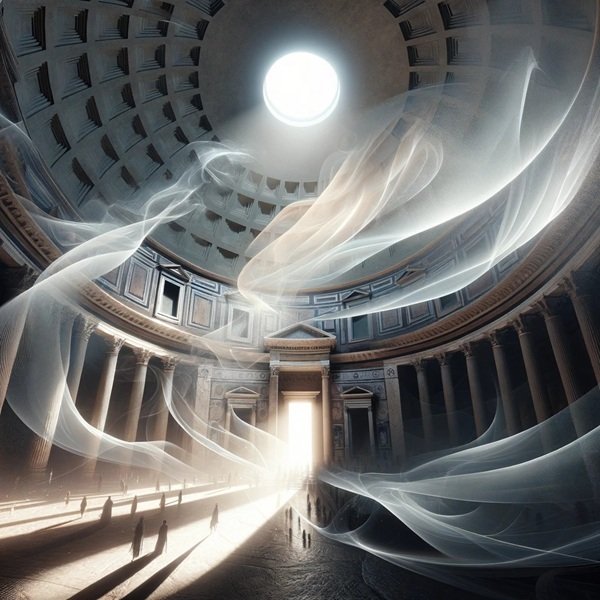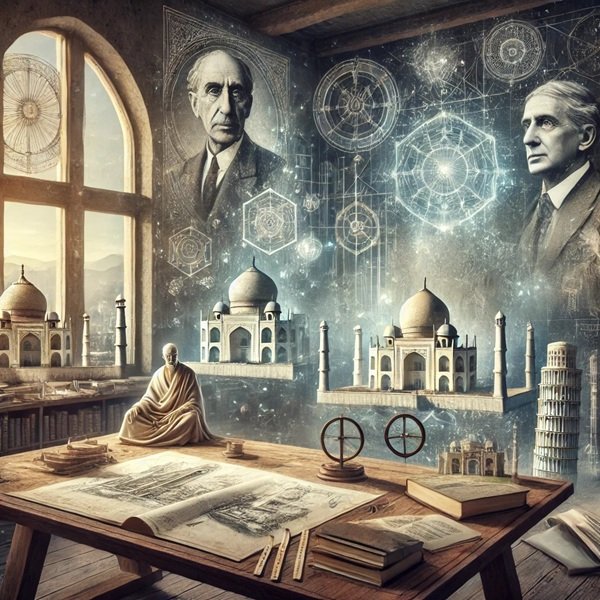Kiasmatic Architecture: The Soul, Memory & Legacy of Design
“Architecture, of all the arts, is the one which acts the most slowly, but the most surely, on the soul.”
— Ernest Dimnet, What We Live By, 1932
Architecture does not shout. It rarely races ahead. But it endures. It lingers long after words have faded and empires have crumbled. Of all the arts, architecture is the most patient, and perhaps, the most profound. It embeds itself in time, not as a passing gesture, but as a perpetual influence. It shapes how we live, feel, move, and remember.
In many ways, architecture is the soul of a culture made visible. It is the stone and steel that breathe life into the ideologies, ambitions, and aesthetics of civilisations—both ancient and contemporary. From the Parthenon of Athens to the glass towers of Dubai, buildings carry the fingerprint of their age. They tell us who we were, who we are, and who we long to be.
Architecture as Art, Architecture as Language
Architecture, like music or poetry, is a language. It speaks without uttering a word. But unlike the fleeting resonance of a musical note, architecture has weight and permanence. It offers us shelter, yet it also offers meaning. Through the delicate choreography of proportion, light, shadow, and material, architecture expresses emotion—hope, power, humility, divinity.

The Gothic cathedrals of Europe soar not just in height, but in ambition. They embody reverence. They pull our gaze upward, whispering to our souls about the possibility of heaven. The minimalism of a Japanese tea house, by contrast, invites us inward. Its simplicity does not signify lack, but clarity. It is an architecture of peace.
The best buildings are silent storytellers. They don’t just house lives—they reflect lives lived with intent.
Kiasmatic Architecture: Sight, Silence, and Sensation
The word “kiasma” in its classical Greek origin refers to a crossing or intersection—a fusion. In biology, it represents the crossing over of genetic material, a place of exchange and transformation. Kiasmatic Architecture, then, is a term that captures the poetic intersection of sensation, silence, and sight in architectural space.

In truly kiasmatic spaces, the physical form dissolves into the metaphysical. Think of walking into the Pantheon in Rome. The oculus in the dome does not just let light in—it connects the earthly to the divine. You are inside, and yet you feel open to the sky. The walls are stone, but the experience is transcendental.
Every line tells a new story. Every shadow adds a new stanza to the architectural poem.
In such spaces:
-
The sight creates anticipation – of light, scale, and rhythm.
-
The silence deepens the presence – where reverence or stillness lingers.
-
The sensation of space – touch, movement, enclosure – connects body to building.
Kiasmatic Architecture is not just built; it is felt.
The Architect as Storyteller and Philosopher
We often think of architects as builders or technicians. But the Masters—those whose names echo across centuries—were something more: philosophers with blueprints, storytellers in stone.
-
Le Corbusier saw homes as “machines for living,” yet in his buildings we find intense humanity.
-
Louis Kahn asked, “What does the brick want to be?”—a poetic question of honesty and harmony.
-
Zaha Hadid didn’t just break lines—she broke perceptions, sculpting space like a painter breaks canvas.

To study the works of such architects is to study them. Their values, their struggles, their worldviews. In their architecture, they become immortal.
We may forget the names of rulers, but we remember the architects. The Taj Mahal, the Sagrada Familia, Fallingwater—these are not just structures. They are testaments to imagination.
Architecture and Memory
There is something profoundly psychological about architecture. A childhood home, a favourite café, the echoing hallways of a school—these become etched in our emotional memory. Architecture becomes the stage for our most intimate stories.

But beyond individual experience, architecture also serves as collective memory. Cities are memory maps. Streets are archives. Buildings are milestones of time. When Notre-Dame burned in 2019, it was not just a structure at stake, but a piece of global memory. The grief was universal.
In this sense, architects are not just designers—they are custodians of memory, makers of identity.
Architecture as Immortality
Most artists hope their work outlives them. But few art forms possess the inherent longevity of architecture. A great building outlasts its creator by centuries, continuing to inspire, influence, and evolve with each new generation.
The immortality of the architect lies in this ability to shape time. Even when the name is forgotten, the building remains—a silent echo of the mind that conceived it.

-
The anonymous artisans of Angkor Wat still speak to us through stone carvings.
-
The ancient Egyptian architects still inspire awe with their pyramids.
-
The civic designs of ancient Rome laid the foundation for urban planning centuries later.
The architect may die, but the architecture lives on.
This is not merely legacy—it is permanence through art.
Architecture and the Spirit of Place
There’s a reason we feel differently in a medieval church than in a modern office block. Architecture carries and conveys the genius loci—the spirit of a place.
When architecture honours its setting, it becomes harmonious. When it ignores it, it feels dissonant.
-
The traditional mud houses of Africa breathe with the land.
-
The whitewashed towns of the Cyclades reflect the harsh sun, cool the air, and mirror the sea.
-
The Himalayan monasteries cling to cliffs not just for protection, but as metaphors for spiritual ascent.
These are not arbitrary designs—they are expressions of place, climate, culture, and belief.
The Crisis of the Contemporary
In the modern world, where speed and profit often outweigh purpose, architecture can lose its soul. Glass towers rise without reason. Cookie-cutter apartments multiply without identity. In such spaces, we may live, but we do not feel alive.
The challenge of the contemporary architect is to resist this erosion of meaning. To remind the world that architecture is not just for shelter, but for soul.
Sustainability, contextual sensitivity, emotional resonance—these are not luxuries. They are obligations of the craft.
Architecture is Human
At its heart, architecture is not about buildings. It is about people.
It is about:
-
The way a hallway can comfort.
-
The way a window can inspire.
-
The way a space can bring us together—or tear us apart.
Architecture shapes behaviour. It influences mood. It can be oppressive or liberating, alienating or welcoming.
To be an architect is to have immense power—and responsibility.
